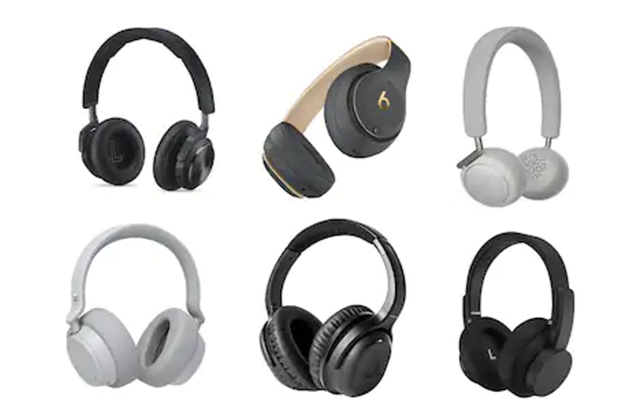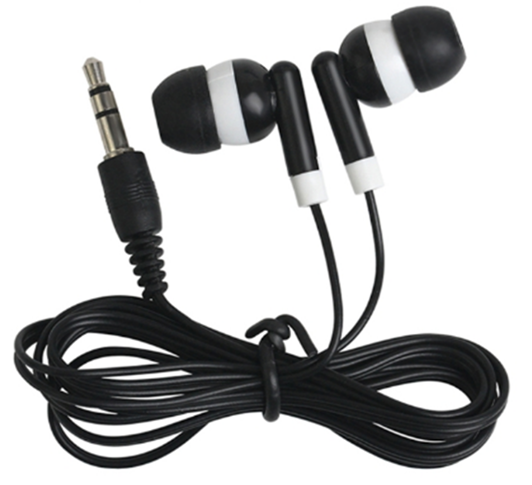Headphones are getting smarter in design these days. The best of them will do for you all the traditional things headphones do in very outstanding ways and even much more.
Blocking out unwanted sound or noise is generally called soundproofing; this is one function that a headphone can perform. There are quite a number of primary methods for diminishing sound. An increase in the space between you and the source of any sound will surely see the sound attenuate while employing physical barriers can also decrease sound levels. While some of these barriers will absorb sound waves, others will deflect or reflect it. There are equally baffles that you can use for dampening. For high-tech solutions, you can employ active noise cancellation.

Your Options
Your sound deadening headphone will be employing some of these means of reducing sound to give you what is meant to be an ideal experience using one. There are basically two types of sound deadening headphones; the noise-isolating and the noise-canceling types. The noise-isolating variation uses merely physical means like blocking, absorption, or deflection to keep away unwanted sound. The noise-canceling models use electronic manipulation to keep off the unwanted sound. You can check here for more information on this.
The first type may have the advantage of being cheaper and more portable, but they are severely limited in their ability to restrict sound. Therefore, you have a situation where the headphones that matter, and are what they are named, employ electronic manipulation to give you the ultimate service.
Factors to Consider When Making Your Choice
When trying to purchase a headphone, there are certain things to consider. Knowing these things will help make your choice based on critical features. Below are something to check for before you make your choice.
Power Requirements of Your Set

Battery Life: because of the employment of electronics, your headphone now requires a means to power it –that is what the battery does. How long this battery lasts before requiring a recharge is worth considering. You wouldn’t want a situation where you need to charge your batteries very frequently, especially in places where obtaining a charging point might not be so available.
Impedance: when we talk of impedance, we are simply referring to the amount of power required to drive the headphone. Higher impedance simply means higher power requirements; with the implication that you will more powerful audio devices to efficiently power it. So, while it will deliver a more robust output, your phone may not have enough juice to power it efficiently. Sets with lower impedance, which can still deliver the great audio quality, therefore offer a distinct advantage.
Noise Cancellation: Your headphone is much about dealing with ambient noise. The very best sets will offer the best noise-cancellation by the use of in-built electronics. You will find some examples here: https://soundproofpros.com/best-noise-canceling-headphones/.
Cables: you will also need to decide if you want a wired or wireless piece. In the past, wireless meant poorer output, but it is not so now. The codecs of most sets have improved in such a way that wireless no longer means bad output. Bluetooth is one of the technologies that make wireless possible. It is therefore up to you to weigh the freedom wireless gives you the extra power requirement that comes with it.
Design and Aesthetics
Portability: One thing that you should really consider is weight. How easy is it to move around with your headphones? Is it heavy? Is it bulky? Can you readily carry it along even if you are moving around without a bag? Your ideal headset shouldn’t give you extra headaches thinking of how to move about with it.
Type (In-Ear, On-Ear, and Over-Ear): There are basically three design types. The in-ear design is meant to fit right into your ear. It comes very portable but may not offer you the best of sound control unless you go for the really expensive models. The on-ear design is meant to rest on your ears. It obviously is a better option for the in-ear design. It is limited though, as it gives room for noise to filter through. The best design is the over-ear design. These ones cup your ears; thus providing the opportunity of sealing your ears from ambient sound. However, they are generally bulkier and may therefore not offer maximum portability.
Fit and Comfort: This is a matter of personal preference, as what a person might find fitting may be very uncomfortable for another. It, therefore, makes sense to try out any headphone before purchasing, and be sure it won’t always slip off while you are using it.
Collapsible Ear Cups: these are designs aimed at making your set more portable. With collapsible ear cups, you can wrap your set and put it into your handbag when not in use.
Sonic Performance

Frequency Response: We are talking about the sound mix of your set –high, mid, low (or what is also known as treble, mid, and bass). The best headphones will have a wide frequency response range which will enable it to deliver a wider spectrum audio reproduction. Smaller sets will have a narrower frequency response range. Some sets come flat; that is, without any frequency tweaks. These are best for music production tasks. Your choice should, therefore, be based on your intended use of it.
Drivers: These refer to the part of the devices that actually gets the sound to you. In layman’s lingo, they are called speakers. Larger drivers are synonymous with better sound output; especially with respect to its bass output.
Sensitivity: You should want to know the amount of decibels your headset can pack; this means how loud it can get. Should this matter? Yes! In as much as your set cancels out ambient sound, it is usually not a perfect job. A loud headset makes it possible for you to keep your music, or whatever you are listening to, higher than the noise that may still filter through your set. So, the best headphones will offer you higher sensitivity.
Sound Stage: Your ears have the ability to detect the direction of the sound. With your ears covered, this ability may be compromised. However, good headphones offer you a good level of the soundstage, that is the ability to hear what you are listening to just the way it would sound if you were listening to it in a live situation.
Build
Durability: you sure wouldn’t want to spend so much for a headphone only to have it go bad at the slightest infraction. The best sets out there are well-built to last. They may be heavier, bulkier; but you are sure that they will withstand wear and tear.
Water Resistance: Some manufacturers have water-resistant varieties. Where you will be needing a headphone might also determine if a water-resistant variety will serve you better. Premium varieties may have this as an extra.
Others
Compatibility: With compatibility, you are considering the extent to which you can pair your headphones with other gadgets. You may want to pair with mobile phones, laptops, tablets, or any other gadget. With the best headsets, connectivity with older gadgets might be a problem, as the codecs of your headphone may not be in sync with their codecs.
Price: The best headphones are expensive –maybe, very expensive. However, anyone who has used these headsets, will not want to trade them for anything.

I bought my first set of quality headphones 4 years a go and they’re still going strong. I use them as my daily driver. Whereas i’ve gone through 4 cheaper earphones in the same time frame. It’s definitely worth
MusicStudioInsights´s last blog post ..The 13 Best Piano Apps for Android